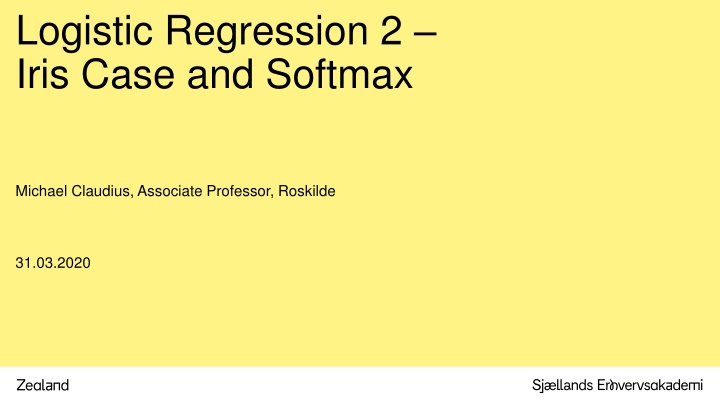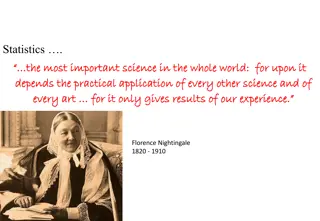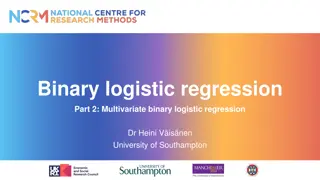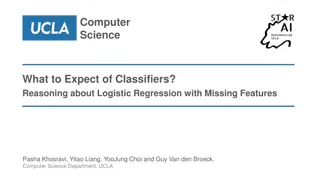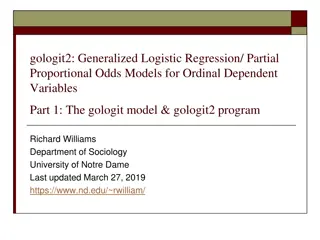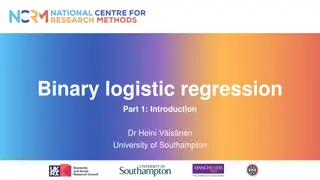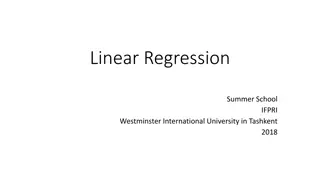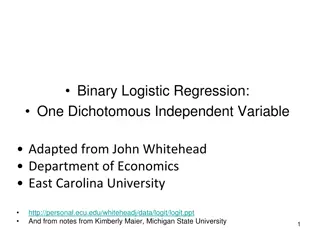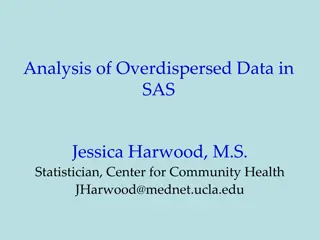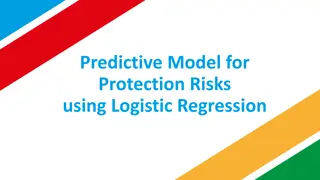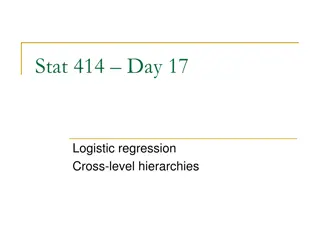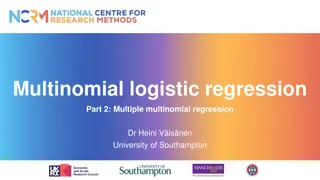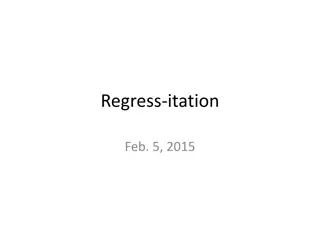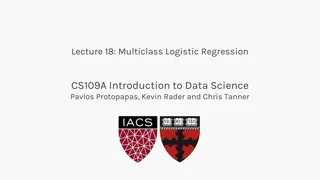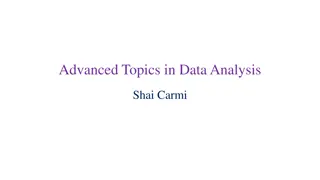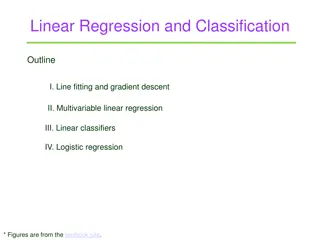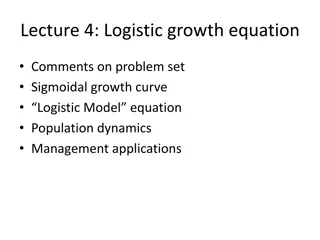Logistic Regression 2
"Explore the use of Logistic Regression and Softmax Classifier in analyzing the Iris flower dataset. From binary classification to multinomial classifiers, learn to build models based on petal and sepal dimensions. Discover how Softmax regression enables handling multiple classes efficiently. The content covers feature selection, decision boundary plotting, and code snippets using Sklearn on the Iris dataset."
Download Presentation

Please find below an Image/Link to download the presentation.
The content on the website is provided AS IS for your information and personal use only. It may not be sold, licensed, or shared on other websites without obtaining consent from the author.If you encounter any issues during the download, it is possible that the publisher has removed the file from their server.
You are allowed to download the files provided on this website for personal or commercial use, subject to the condition that they are used lawfully. All files are the property of their respective owners.
The content on the website is provided AS IS for your information and personal use only. It may not be sold, licensed, or shared on other websites without obtaining consent from the author.
E N D
Presentation Transcript
Logistic Regression 2 Iris Case and Softmax Michael Claudius, Associate Professor, Roskilde 31.03.2020 .
The Iris flower case Data set with 150 Iris pictures of 3 different species (50 each) 2 2 7 . 0 2 . 2
Choose and build classifier(s) Find features and make a decision. Remember simple ones first! First, a binary classification based on 1. Petal width, Iris Virginica or Not Iris Virginica 2. Petal width and length, decision boundaries Virginica or Not Iris Virginica Second, Multinomial classifier based on 1. Petal width and length, Iris Virginica OR Iris Versicolor OR Iris Setosa 2. Using Softmax Third, binary classification based on 1. Sepal width, Iris Virginica or Not Iris Virginica 2. Sepal width and length, decision boundaries Iris Virginica or Not Iris Virginica Fourth, Multinomial classifier based on 1. Petal width and length , Sepal width and length, Iris Virginica OR Iris Versicolor OR Iris Setosa 3 2 7 . 0 2 . 2
Classifier code using Sklearn on Iris data set Highlights of code Import data set from sklearn import datasets iris = datasets.load_iris() list(iris.keys()) X = iris["data"][:, 3:] # petal width y = (iris["target"] == 2).astype(np.int) # 1 if Iris virginica, else 0 Train regression model from sklearn.linear_model import LogisticRegression log_reg = LogisticRegression(solver="lbfgs", random_state=42) log_reg.fit(X, y) Plot probability and decision boundary A lot of hokus pokus. Next slide More is given in the LogisticRegIris.ipynb program on teacher s home page 4 2 7 . 0 2 . 2
Iris: Probability plot with a decision boundary Probability function using petal width 5 2 7 . 0 2 . 2
Iris: Probability plot with decision boundaries Probability function using petal length and petal width Notice the linear decision boundaries (e.g. green 90%probability) What if I want more than two classes? No problem use Softmax regression 6 2 7 . 0 2 . 2
Classifier using Softmax Regression Softmax is a multinomial logistic regression classifier Support 2 or more classes; multiple classes Predict one class at a time Estimate probability for each class given an instance X Classes must exclude each other! 7 2 7 . 0 2 . 2
Softmax Regression Steps Compute a score (Softmax score) for every class for instance x Estimate the probability for each class using normalized exponential (softmax function) Predict the class with highest probability Train the model so high probability for the target classes Minimizing the cross cost entropy function All done by applying Batch Gradient Descent All in all, similar steps as linear regression as well as logistic regression for binary class BUT more complicated mathematical formulas and functions 8 2 7 . 0 2 . 2
Softmax functions This I will skip I don t want to be killed by students 9 2 7 . 0 2 . 2
Classifier code using Softmax on Iris data set Highlights of code Import data set from sklearn import datasets iris = datasets.load_iris() list(iris.keys()) X = iris["data"][:, (2,3)] # petal length , petal width y = iris["target"] #all 3 classes involved Train regression model from sklearn.linear_model import LogisticRegression soft_reg = LogisticRegression(class= multinomial, solver="lbfgs", C=10) soft_reg.fit(X, y) soft_reg.predict([5,2]) array([[1.55606703e-04, 9.51675722e-01, 4.81686717e-02]]) Plot probability and decision boundaries A lot of hokus pokus. Next slide More is given in the LogisticRegIris.ipynb program on teacher s home page 10 2 7 . 0 2 . 2
Iris: Probability plot with decision boundaries Probability function using petal length and petal width and 3 classes Notice the linear decision boundaries (e.g. green 90%probability) for Iris Versicolor 11 2 7 . 0 2 . 2
The Program Code It is time for a short review of the code I will highlight a few points Logistic Regression Iris Program 12 2 7 . 0 2 . 2
Exercise It is time for discussion, coding and solving the Iris case yourself Logistic Regression Iris Exercise Logistic Regression Iris Program Or if you need rest an old timer: Donald Duck on Math hunting 1959 13 2 7 . 0 2 . 2
